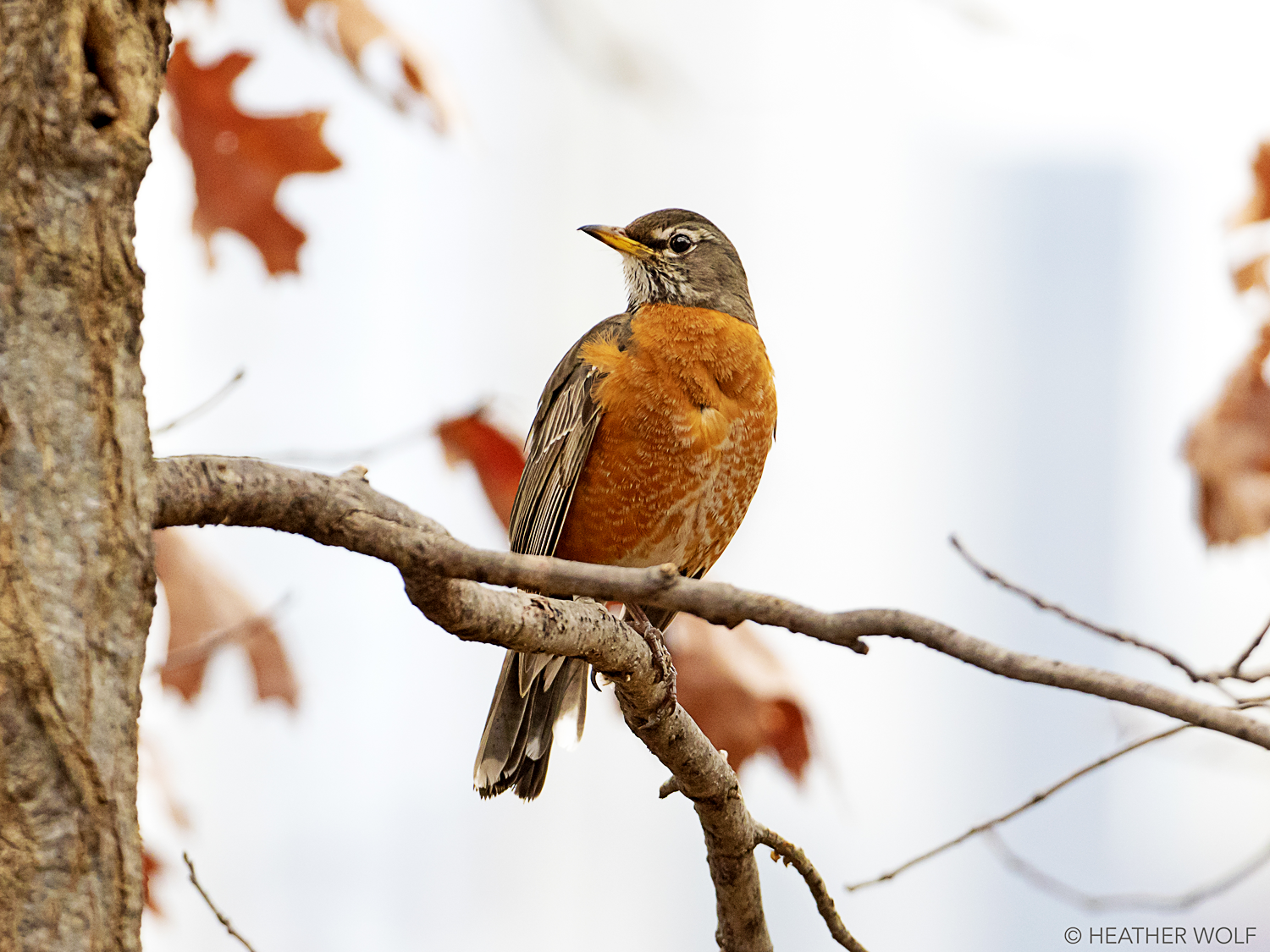Brooklyn Bird Watch: April 8
American Robin. Scientific Name: Turdus migratorius

Today, Brooklyn Bird Watch features a Heather Wolf photo of the American Robin, seen in Brooklyn Bridge Park. There is probably no better bird to represent the coming of Spring than the one the Cornell Lab of Ornithology calls “the quintessential early bird.”
The American Robin is one of our most popular songbirds, with its famously recognized orange or red-brick colored breast feathers and lyrical whistling, as well as its often photographed and illustrated struggles tugging an earthworm from the ground in early Spring. Robins are not only familiar birds seen in towns and cities, especially in city parks, they are also at home in the wilder areas like mountain forests and even the Alaskan wilderness. With the exception of the prominent “redbreast”, their body plumage is predominantly grey with a dark head and distinct white circles around the eyes.
Robins are abundant as they can produce three successful families in a year, yet only about 40 percent of the nests successfully produce young. Only 25 percent of those fledged young survive to November. From that point on, only about half of the robins alive in any year will make it to the next. Despite the fact that a few “lucky” robins can live to be 14 years old, the entire population turns over on average every six years.

Brooklyn Boro
View MoreNew York City’s most populous borough, Brooklyn, is home to nearly 2.6 million residents. If Brooklyn were an independent city it would be the fourth largest city in the United States. While Brooklyn has become the epitome of ‘cool and hip’ in recent years, for those that were born here, raised families here and improved communities over the years, Brooklyn has never been ‘uncool’.